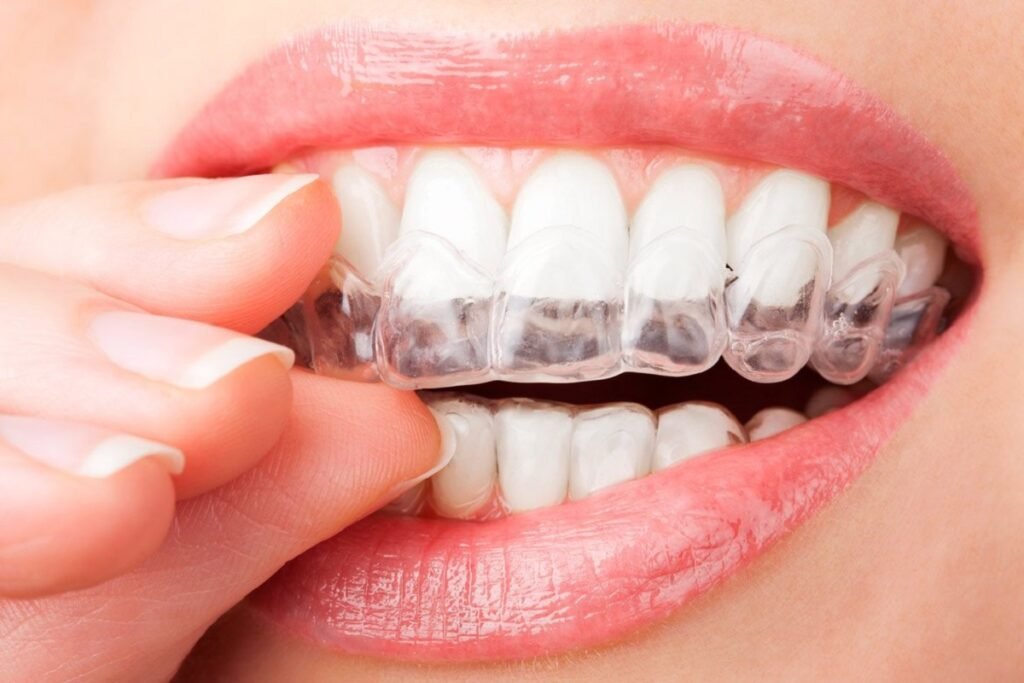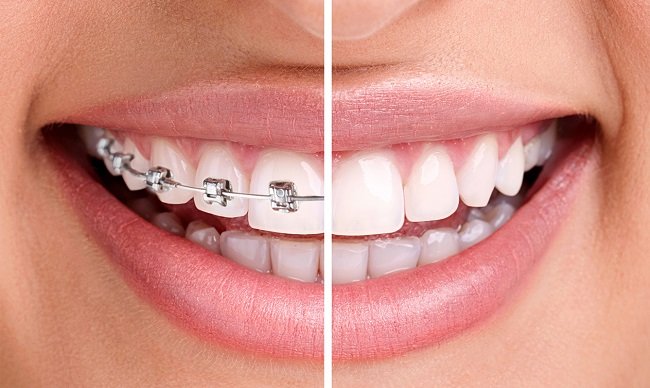Picture showing off your smile without exposing a mouth of metal. That’s the beauty of transparent orthodontic braces—discreet, convenient, and a modern alternative to traditional braces. Aidite is helping get those teeth straightened out for teenagers or adults looking for an aesthetic fix for misaligned teeth, not with braces, but by helping teach dental professionals and patients with innovative dental solutions and resources.

What Are Transparent Orthodontic Braces?
These are smart new oral devices used to straighten teeth, but are also hardly noticeable. They wear clear braces, crystal clear braces, or invisible braces for teeth that can hardly be distinguished from normal teeth. You could also opt for ceramic or plastic braces that will make your braces less detectable than the more commonly used metal types.
There are different transparent orthodontic braces types under this category:
- Invisible Aligners: Plastic trays are used that are removable, like Invisalign, and move teeth in gentler stages than wires or brackets can provide. They are also low-discreet, comfy, and easy to clean.
- Ceramic Braces: Teeth colored brackets cemented to the front of teeth. Braces can provide the same level of strength as traditional orthodontics but come in less visible styles.
- Lingual Braces: These are braces that are placed behind the teeth. These are well hidden but need special care and adjustment.
Why Are Transparent Orthodontic Braces an Excellent Choice?
Now, let’s list down some reasons for the rise in popularity of transparent orthodontic braces:

- Discreet Appearance: For clear orthodontic braces or invisible braces for teeth, the stealthy look makes you feel you have nothing on your mouth when at school or at a meeting.
- Comfortable Experience: Most options, such as crystal clear braces and lingual braces, are made with comfort in mind, causing less irritation than metal brackets.
- Professional Acceptance: Adults particularly appreciate clear dental braces, as they do not change appearance in professional circumstances.
- Effective for Complex Cases: Unlike clear aligners, transparent orthodontic braces types take care of extremely serious skeletal misalignments.
- Less Disruption to Lifestyle: invisible braces for teeth and clear aligners can be taken out to eat and removed for public functions so that they do not interfere with life too much on a day to day basis.
- Enhanced Confidence: Patients feel good about smiling during treatment as transparent dental braces are hardly visible.
Common Problems They Can Solve
Lingual braces and clear orthodontic braces are transparent systems that aren’t only pretty but also powerful.
- Crooked teeth: Clear ceramic brackets are almost invisible, allowing teeth to gradually be shifted into the correct position over time.
- Overbites or underbites: invisible braces for teeth are ideal for mild to moderate bite corrections
- Gap problems: When you have spaces for advanced technology, transparent dental braces heal them seamlessly.
- Crossbites: Complex alignment problems can be resolved using advanced systems, such as lingual braces, discreetly.
- Misaligned midlines: Transparent orthodontic braces can also create better alignment of the upper and lower midlines.
- Speech problems from improper alignment of teeth: Improving alignment with crystal clear braces or clear aligners can enhance pronunciation and oral function.
What to Expect During Treatment
So, this is a step by step outline of what patients can expect with clear braces:
- Initial Consultation: The first step is an expert assessment to see whether clear dental braces, clear orthodontic braces(aligners), invisible braces for teeth, or lingual braces are appropriate for you.
- Digital Scans or Impressions: A series of high-resolution images or traditional molds is captured to create your personalized plan of treatment. These aid in creating accurate, crystal clear braces or clear aligners.
- Treatment Planning: Your orthodontist will outline the movements of the teeth and present the most appropriate treatment: clear orthodontic braces, lingual braces, or invisible braces for teeth.
- Application or Delivery:
- Some transparent orthodontic braces types of braces that are used are ceramic braces or crystal clear braces bonded to the front of the teeth.
- Lingual braces fit on the rear side of the teeth for complete invisibility.
- They come in several sets that are worn at home.
- Adjustment Appointments: Transparent orthodontic braces are adjusted by orthodontists every 4–6 weeks to ensure your treatment stays on course. The two transparent orthodontic braces types, lingual braces and clear braces, also require you to have the wires tightened or changed. For clear aligners, they give new trays.
- Daily Wear & Care
- You have to wear invisible braces for teeth 20–22 hours a day.
- Lingual braces and clear braces — these orthodontic appliances are stationary (they stay on your teeth) and require good oral hygiene to make sure transparent dental braces don’t get stained.
- Avoid staining foods to maintain a crystal clear braces appearance.
- Monitoring Progress: Your orthodontist will check on your teeth to see if they are regrowing inside the bone in the right manner, and if not, they will adjust them. Some systems that offer invisible braces for teeth use technology to keep track of the progress that occurs over time.
- Completion Stage & Retainers: When the teeth are aligned, transparent orthodontic braces are taken out, or the last tray is worn. Patients are then given retainers (fixed or removable) to ensure that the results last.
Clear Brackets Vs Metal Brackets Braces
Understanding the clear brackets vs metal brackets braces can significantly impact your orthodontic treatment experience. Let’s explore the key points:

1. Appearance
- Transparent Orthodontic Braces: These brackets are designed to be almost invisible, ideal for those seeking a discreet treatment option that does not attract attention.
- Traditional Metal Braces: These braces are very noticeable with a shiny wire and brackets on all teeth, and therefore more apparent in both work and social settings.
2. Comfort
- Transparent Orthodontic Braces: More comfortable than metal bracket-and-wire braces, these braces use more gentle materials such as ceramic or plastic, which are less likely to irritate the inside of your mouth.
- Traditional Metal Braces: The edges of steel work can gradually aggravate or create aching in the cheekbones and gum area.
3. Material
- Clear orthodontic braces: These braces are made of clear ceramic, plastic, or polymer materials that blend with the color of your teeth.
- Traditional Metal Braces: Made of strong but highly noticeable stainless steel or titanium.
4. Placement
- Transparent Orthodontic Braces: These can be affixed to either the front (ceramic) or the rear of the teeth (lingual braces) for maximum discretion.
- Traditional Metal Braces: Never hidden from view, as they are always located on the front of the teeth
5. Maintenance
- Transparent Orthodontic Braces: These braces need more care with oral hygiene, as the most sought-after material is prone to dulling or staining over time.
- Metal Braces: Lower pain level across the board, but they all require special care to make sure no plaque builds up.
6. Aesthetic Appeal
- Clear Braces: Great for adults and teens who want a clear option that fuses with natural teeth.
- Traditional Metal Braces: For kids and teens, traditional metal braces are widely used. Although they are the most visible and least appealing type of braces, therefore, most adults avoid this type of brace.
7. Ideal for
- Clear Orthodontic Braces: Ideal for the fashionable teenager, busy working professional, or anyone who wants a more subtle orthodontic solution.
- Metal Braces: The most common type, especially for kids, teens, and cost-conscious adults.
Carefully evaluating clear brackets vs metal brackets braces ensures you choose the right orthodontic treatment for your lifestyle and dental needs. Aidite is a pioneer in dental solutions built for the latest equipped laboratory, and we are dedicated to providing professional support with beneficial dental advances and updated clinical experience. Our blog helps educate dentists as well as patients on dental topics from digital dentistry to restorative materials, helping people make easier decisions.
FAQs
Q1. How can invisible braces for teeth perform against traditional metal braces?
Well, yes, they do provide similar results for several cases, particularly mild to moderate alignment problems.
Q2. Can I get transparent braces if I have severe crowding?
Sure, but in general, lingual braces or crystal clear braces treat more complex alignment issues.
Q3. Are invisible braces for teeth the same as clear braces?
No, invisible braces for teeth mean removable aligners that always have the same shape, and clear orthodontic braces are bracket which has to be treated at every step inside your mouth to make them beyond your expectations.
Conclusion
Transparent orthodontic braces take the traditions of orthodontics and elevate them to meet the requirements of an imperfectly perfect life. When choosing between invisible braces for teeth and crystal clear braces, it boils down to convenience and lifestyle. Although we do not provide braces directly, Aidite contributes to modern dentistry by empowering professionals with the tools and knowledge to make better treatment decisions for patients worldwide.



